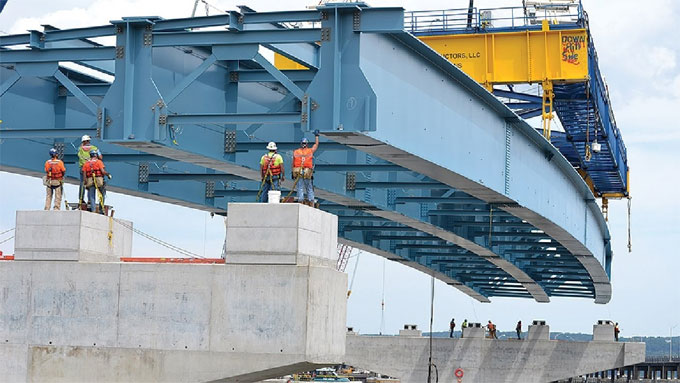
Methods used for Modern Bridge Construction

All types of bridges act as a vital links in the development of infrastructures. Be it the beam, arch, suspension, truss, cable stayed, cantilever, truss-arch, and lattice truss, from pedestrian walkways to beautiful spans of spectacular gorgeous structures,the requirements of every bridge is different which makes it challenging during fabrication.
A completely different construction methods might be required for the same bridge design; this is due site restrictions and accessibility. It may happen that a particular site has unrestricted areas for stockpiling of materials, equipment staging, and traffic control detours whereas the other site has limited access and also require unrestricted traffic flow while the construction is taking place.
Place fabrication techniques can be followed by the former whereas prefabricated methods might be required for the latter. Therefore, there are no single construction method for bridge erection, but there are a number of broad categories of fabrication techniques. They are:
- Falsework or staging: these are the temporary framing and scaffolding which is needed for supporting structural elements during construction.
- Span-by-span: Here the structural elements are fabricated in situ right between supporting structures to be able to create each span in a sequential process.
- Full span erection: offsite construction of fully prefabricated spans takes place,it is then transported to the bridge construction project after which it is installed as a whole between the supporting structures.
- Balanced cantilever: In this type segments are installed or fabricated in situ just on opposing sides of a supporting pier till the point that the span is complete.
Additionally, there may be more than one technique employed on a single project to achieve the most efficient construction process.
At least one of two types of heavy equipment are usually present to be able to facilitate such techniques:
- Crane assist: These are used to hold in position structural elements temporarily by one or more movable lifting cranes. The cranes are usually located on the ground, barges, or even on the bridge itself depending on the construction progress.
- Gantry or launch girder: These support a track and carriage which then hosts or transports structural elements through the bridge span, after which they travel again horizontally to the next span. The are usually horizontal steel frameworks.
Compared to other columns in the same scale concrete columns have a higher stiffness.
Modern bridge construction accounts for pre and post completion loading, this is something that is implemented. The full structural strength of a bridge cannot be assumed until the elements are connected, therefore each elements might be shifted out of position or pre-stressed prior to final connection.
Such as, in case of suspension and cable stayed bridges it usually arc away from the true load line till the point the weight of the decking has been completely applied.
In case of bridges using structural concrete a certain technique of post-tensioning is used to make sure that the structural element experiences primarily compressive loading.
This is extremely important due to the fact that a concrete usually has poor tensile strength. It is important to understanding such basicconcepts not just for construction but also during bridge maintenance and inspection.
When a suspension bridge deviates from its load line it might be indicating missing elements, or if there is tensile microcracks in a concrete beam it might be indicating of insufficient post-tensioning.
It is true that such concepts are easier to describe whereas extremely, costly, and time consuming to execute.
Bridge construction engineers are constantly looking for the best solution with the rising demands for faster completion time, lesser construction injuries, lower costs, decrease in inconvenience, to move in, move out and stay out.
There have been extraordinary bridges made by connecting the dots such Mackinaw Bridge, the Millau Viaduct, and the Beipanjiang River Railroad Bridge and a lot more.
With the rise in innovative technique in civil engineering there will be even more extraordinary bridges built for sure.


